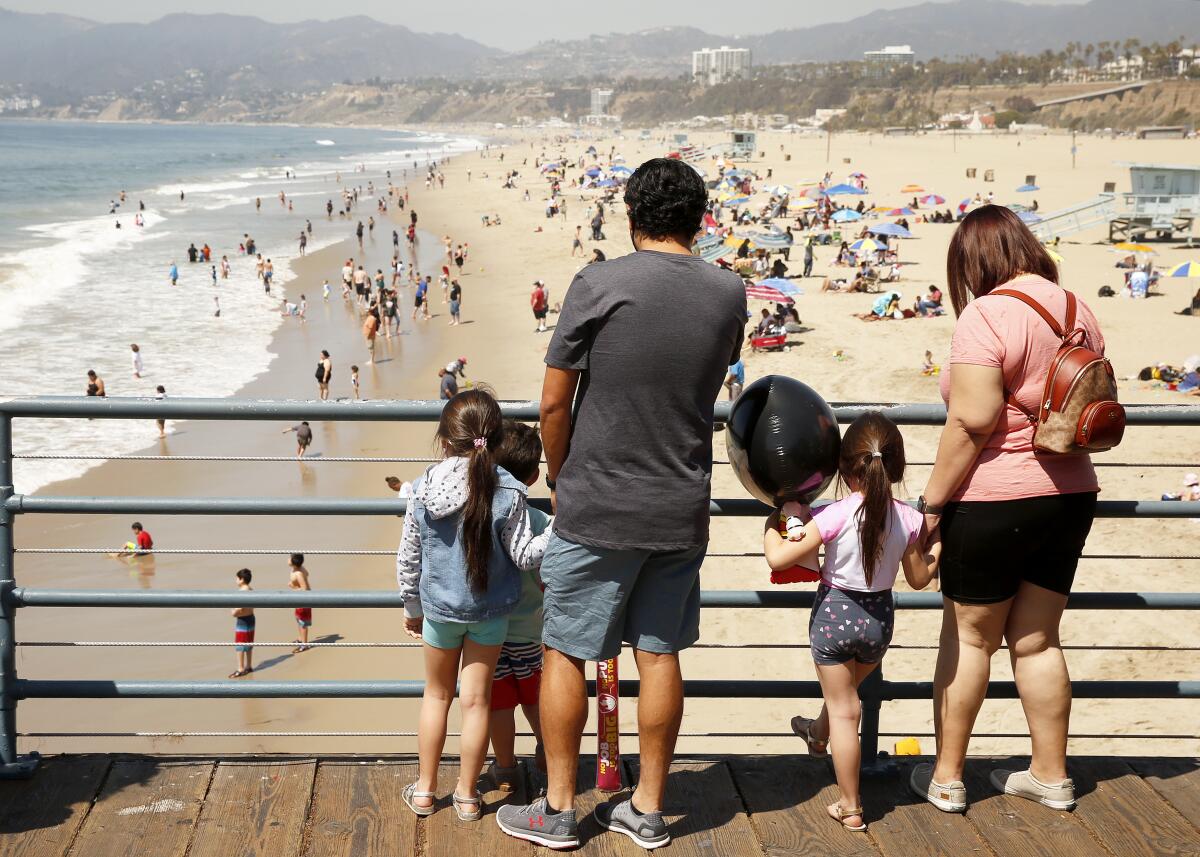California’s population dropped by 500,000 in two years as exodus continues

The California exodus has shown no sign of slowing down as the state’s population dropped by more than 500,000 people between April 2020 and July 2022, with the number of residents leaving surpassing those moving in by nearly 700,000.
The population decrease was second only to New York, which lost about 15,000 more people than California, census data show.
California has been seeing a decline in population for years, with the COVID-19 pandemic pushing even more people to move to other parts of the country, experts say. The primary reason for the exodus is the state’s high housing costs, but other reasons include the long commutes and the crowds, crime and pollution in the larger urban centers. The increased ability to work remotely — and not having to live near a big city — has also been a factor.
The rate of the exodus may now be slowing as the pandemic’s effects ease, but some experts say it could be a few years before the Golden State starts to record the kind of population growth it has seen in the past.
The census data point to those states that have seen population gains even as California’s has shrunk.
Net migration out of California surpassed that of the next highest state, New York, by about 143,000 people. Nearby states such as Utah have sought to discourage Californians from moving there. A similar story is playing out in Nevada, where California migrants are seeking to re-create their lifestyle.
California gained about 157,000 more people from natural change — the difference in number between births and deaths — than New York did, making New York’s total population loss greater.
During the final year of the two-year span, from July 2021 to July 2022, California lost about 211,000 people, according to data from the state Department of Finance. More than half — 113,048 — were from Los Angeles County, the most populous of California’s 58 counties.
The county had lost around 160,000 people in the previous 12 months, with nearly all of the population loss driven by domestic migration.
Much of the net migration out of California was “people seeking safe refuge during the pandemic” with parents or friends, causing people to “get out of the central cities,” said Dowell Myers, a professor of policy, planning and demography at USC.
Even as the pandemic has receded, young people continue to leave California, he said.
The state “still attracts them, it just can’t hold them as well,” Myers said, noting that many young people come in as renters, then leave the state for lower housing prices elsewhere.
“People who are leaving are much more likely to be homeowners after they leave,” he explained.
He suggested that increased immigration, more births and softening housing prices should help boost the state’s population. “The clock is ticking on millennials,” he said of those who have waited to have children, often because of housing and cost-of-living pressures.
“People tend to have babies more when they’re optimistic,” Myers said.
Myers said that he believes “annual change will be much closer to zero” in 2023 than the hundreds of thousands of people lost in the last two years, and “should turn positive” by 2024.
Paul Ong, director of the Center for Neighborhood Knowledge at UCLA, also pointed to economic, health and sociopolitical factors driving people to leave the state. He noted that housing prices in California have pushed many to move to states where costs are lower.
“While salaries in other regions and states are lower, the cost of housing is even lower,” he said. “This means that they have a higher standard of living because of more disposable income and/or high chance of owning.”
His research showed that the bulk of departures in Los Angeles County were from the city of Los Angeles.
“There is a fast, clear and sharp spike during the pandemic,” he said of net population losses in the city. People moved “away from the denser urban core, where COVID-19 risk was perceived as being higher. Remote work also added to this out migration.”
Ong noted that population loss has slowed since its peak in 2020, but that there have been “no net gains to offset the pandemic losses.”
Alex Stack, a spokesman for Gov. Gavin Newsom, directed The Times to census data scaling net loss by overall state population. Between July 2021 and July 2022, California ranked 10th in population percentage decrease.
However, a Times analysis of that same data from April 2020 to July 2022 showed that even when scaled for overall population, California’s percentage decrease was fourth largest in the country, behind New York, Illinois and Louisiana.
As California’s population has shrunk, some of the nation’s most populous states have added people at a considerable rate.
The states with the highest population increases between April 2020 and July 2022 were Texas and Florida, which gained about 884,000 and 707,000 people, respectively.
More to Read
Start your day right
Sign up for Essential California for news, features and recommendations from the L.A. Times and beyond in your inbox six days a week.
You may occasionally receive promotional content from the Los Angeles Times.







